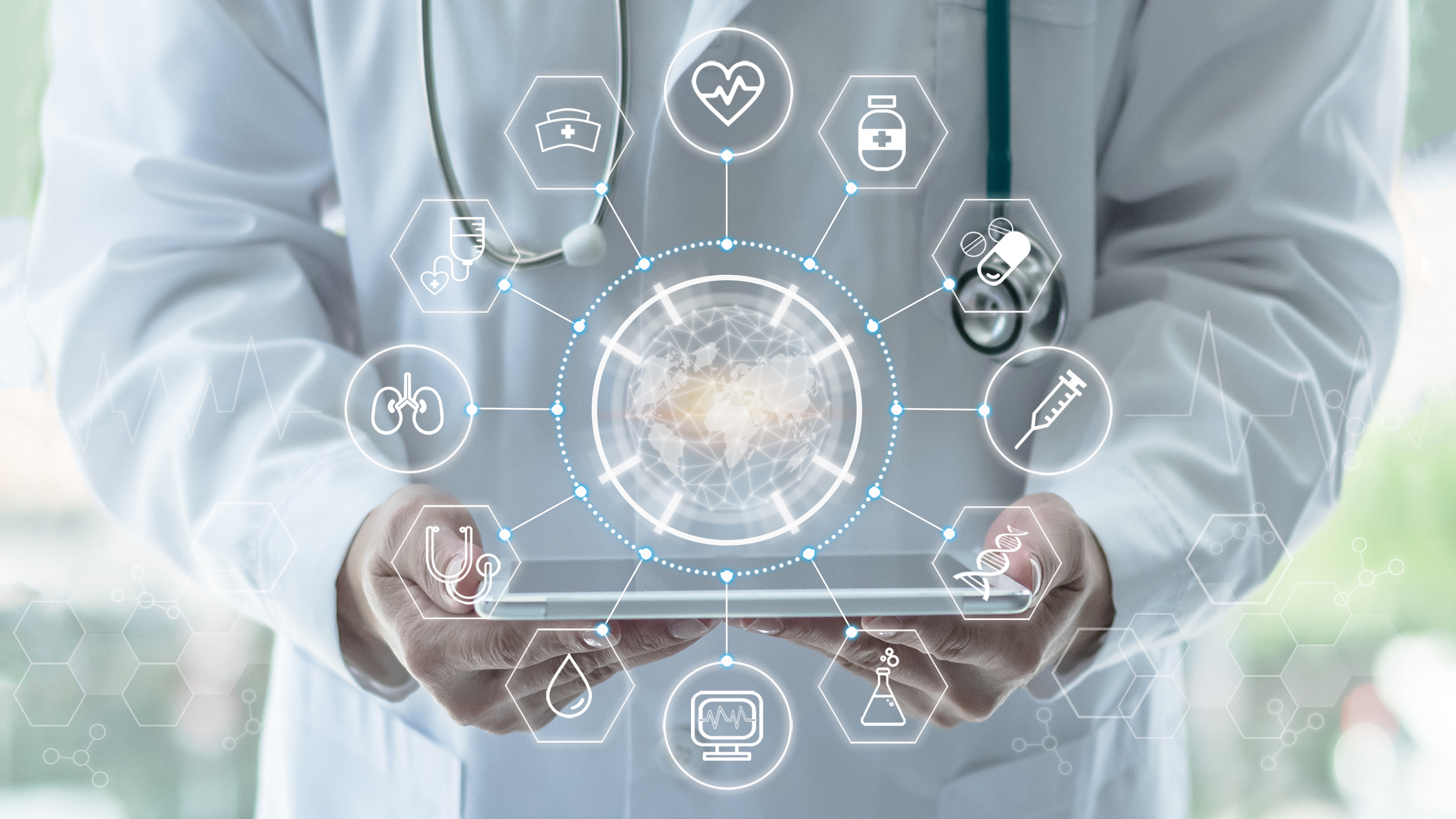Chatbots for Healthcare Industry: Benefits and Challenges
Introduction
The healthcare industry is a behemoth standing at crossroads, preparing to leap forward. It has been facing crushing costs and red tape that it wants to do away with. Consequently, the industry is working double time to improve itself in every imaginable area. It is being driven by technological advancements and shifting patient expectations. This is the point where health tech intervenes. Tech-infused tools are being integrated every step of the healthcare experience to counteract the twin problems of quality and efficiency. Digital Health solutions are trimming the fat from the traditional healthcare landscape. The challenges of skyrocketing costs, unbearable wait times, inefficiencies in drug development, and limited access to insurance and healthcare providers are being addressed by healthtech.
Among the various Digital health solutions for the weighed-down healthcare industry is chatbots in healthcare. They have grabbed attention for their ability to revolutionize patient engagement, streamline clinical workflows, and enhance overall care quality. The integrated package of artificial intelligence (AI), natural language processing (NLP), and machine learning (ML) in chatbots makes them capable of handling various healthcare settings. Healthcare chatbot technology can improve patient outcomes, reduce costs, and foster collaborative relationships between patients and healthcare professionals. Chatbots in healthcare can multitask as virtual assistants, telemedicine platforms and can even assist with predictive analytics and population health management.
In the following blog, we will examine the benefits and challenges of integrating chatbots in healthcare ecosystems, the current state of healthcare chatbot technology, its applications, and the opportunities for growth and innovation. We will also explore the key considerations for healthcare leaders looking to yoke healthcare automation for transformative change within their organizations. Let’s begin with the apparent benefits of chatbots in healthcare.
Benefits of Chatbots in Healthcare
There is no overlooking or denying the fact that the healthcare industry is experiencing changes and advancements in double quick time. Within the ambit of digital health solutions, we have AI, Neuro-symbolic AI, and NLP, to name a few healthtech disruptions that are making their way into hospital systems, research labs, medical insurance, and doctor practices. In recent years, conversational chatbots and virtual assistants have taken center stage. And sensibly so. It is the age of digital customer experience, and customers expect expedited response and delivery. No wonder the Healthcare chatbots market was valued at USD 194.85 in 2021 and is projected to reach USD 943.64 million by 2030.
A chatbot is an automated tool that simulates an intelligent conversation with a human user. Healthcare chatbots take this to the next level in virtual customer service and planning and management of healthcare businesses. These self-service tools enhance healthcare automation and serve customers in more personalized interaction. It has been found that customers generally prefer talking to chatbots rather than browsing websites or communicating with outsourced call centers. Let’s recount the benefits of chatbots in healthcare to understand how the above assertion can hold water.
1. Improved Patient Engagement:
Chatbots promise to revolutionize patient engagement solutions. These virtual assistants ask relevant questions and analyze patient responses to understand their specific needs and context. They can provide personalized guidance, medication reminders, and follow-up care instructions. The intelligent triage system helps determine the severity of a patient's condition and recommends professional medical attention or self-care, thus preventing issues from escalating into beyond-redemption cases. Chatbots in healthcare might also be equipped with language translation capabilities. This feature ensures non-natives can receive help in their preferred language, promoting inclusivity and better patient outcomes.
2. Enhanced Accessibility and Convenience:
Another very significant patient engagement solution is the chatbot’s accessibility. Patients can interact with them through websites, mobile apps, and messaging services without in-person approaches. Healthcare chatbot technology thus makes healthcare accessible, cost-effective, and less discouraging. Chatbots can bridge geographical and accessibility gaps by offering remote support. Patients can access medical information, schedule appointments and receive care coordination through conversational interfaces.
3. Reduced costs and Increased Efficiency:
Adoption of healthcare automation appears to be imperative in the current times when busy clinicians, physicians, bustling hospitals, and billing centers – all face a common challenge of overflowing patient queries with limited staff to handle them individually. This is where chatbots in healthcare prove their worth. They are armed with AI and vast information databases to answer countless questions without bothering human healthcare professionals. Research states that chatbots can save 2.5 billion hours per year in customer interactions by streamlining processes and workflows, which frees up human resources for more challenging duties.
4. Data-driven Insights for Better Care:
Chatbots in healthcare collect and analyze patient data. When patients discuss their symptoms with a chatbot, the AI assesses information, asks follow-up questions, and provides an initial diagnosis or triage recommendation. Chatbots cannot replace physicians but can help prioritize patients based on the severity status of symptoms. This allows hospital personnel to queue up patients accordingly and prevent overcrowding in emergency rooms, departments, and clinics. This facilitates quicker response for those who need it most urgently.
5. Streamlined Clinical Workflows:
Healthcare chatbot technology contributes vigorously to streamlining clinical workflows and enhancing efficiency for a more sustainable healthcare system. Chatbots integrate electronic health records (EHRs), laboratory systems, and other healthcare technologies to streamline clinical workflows. The AI and ML technologies automate repetitive tasks, provide real-time updates for care coordination, and even provide intelligent decision support. For instance, AI in healthcare can analyze medical images, assist in diagnosis, and suggest personalized treatment plans. Chatbot technologies can even identify high-risk patients and alert clinicians to possible complications. The advent of chatbots has provided more relief in healthcare by optimizing appointment scheduling and patient flow. They implement intelligent scheduling systems that consider patient acuity, provider availability, and resource constraints to reduce wait times and control patient flow. These also utilize patient portals and automated reminder systems to improve patient engagement and reduce no-shows.
6. Mental Health and Wellness Support:
Chatbots in healthcare offer immediate access to emotional support, counseling, and cognitive behavioral therapy for any mental health issue regardless of geographical, language, or time zone boundaries. The anonymity, the non-judgmental support, and the cost-effectiveness encourage patients to seek this form of mental care readily. Chatbots do not embarrass the patient by repeating questions every time the patient logs in. They remember past conversations and make treatment suggestions or answer queries accordingly.
At first glance, the advantages of implementing chatbots in healthcare appear to be the panacea for all problems, but several limitations hinder their widespread adoption and effectiveness.
Limitations and Challenges of Chatbots in Healthcare
Chatbots have showcased significant potential, but their adoption is not without challenges and limitations. Despite their ability to streamline patient communication and reduce administrative burdens, chatbots often encounter hurdles related to data privacy, regulatory compliance, and patient trust. Their effectiveness can be limited by technological constraints, such as natural language processing inaccuracies that may lead to misinterpretation of medical inquiries or symptoms. Furthermore, chatbots may lack the nuance and empathy of human interactions, making it difficult to adequately address complex or sensitive health concerns. Addressing these challenges is crucial for maximizing the benefits and ensuring the safe integration of chatbots into healthcare systems. The first of the limitations of healthcare automation in the form of chatbots would be:
1. Limited Medical Expertise:
This is a significant challenge for healthcare chatbots, as they typically rely on pre-programmed responses and algorithms rather than genuine medical judgment. This limitation can prevent chatbots from accurately diagnosing complex health issues or providing nuanced care recommendations, necessitating human oversight to avoid potential misdiagnoses or inappropriate guidance.
Chatbots in healthcare lack a human healthcare professional's nuance, expertise, and experience. This can lead to the following:
- Inaccurate Diagnoses
Chatbots often rely on pattern recognition and predefined algorithms, which can result in incorrect assessments when symptoms are complex or rare. Unlike human professionals, they may miss subtle clues or rely on incomplete information, leading to diagnostic errors.
- Inaccurate Treatment Recommendations
Without the depth of medical training or contextual understanding, chatbots might offer generic or unsuitable treatment advice. This can endanger patient safety, especially when tailored care and critical adjustments to treatment plans are necessary.
- Failure to Recognize Complex Conditions
Chatbots may struggle to identify multifaceted health issues or comorbidities that require a comprehensive, personalized approach. Their limitations in interpreting overlapping symptoms or uncommon conditions can lead to delayed or missed interventions.
2. No Real Human Interaction:
Chatbots or AI in healthcare do not give the warmth and empathy that a patient might want during a medical crisis. Chatbots would work fine when dealing with the flu or the common cold, but anything more serious would demand a human caregiver.
3. Data Privacy and Security Concerns:
Chatbots handle sensitive patient data. This raises concerns about HIPPA compliance, data breaches, and unauthorized access. To bring chatbots into healthcare, ensuring robust security measures and adherence to regulatory standards is crucial.
4. Lack of Contextual Understanding:
Chatbots work on data and patterns. They cannot comprehend patients’ unique circumstances, medical histories, and social determinants of health.
5. Dependence on Quality of Training Data:
The quality of training data mainly determines chatbots’ accuracy. This could be biased, outdated, or incomplete.
6. Inability to Handle Ethical Considerations:
Deciding on medical treatment often involves ethical considerations that are beyond data patterns. Chatbots are not programmed with a moral compass and might suggest treatments that contradict patient ethics or violate patient trust.
7. Level of Digital Literacy:
Chatbots require patients to be comfortable with technology and be willing to engage with digital platforms. This can be challenging as digital literacy depends on patients' social and financial status.
8. Integration Challenges:
Chatbots must seamlessly integrate with various digital health solutions like electronic health records (EHR), Laboratory systems, and even wearables to work optimally. This might be affected by the internet speed or software issues.
Conclusion
Chatbots are transforming and will continue to transform the healthcare industry. It is very obvious that their potential extends far beyond current applications. Currently, chatbots are at the stage where they can perform the following functions:
1. Integrate seamlessly with emerging technologies like augmented reality, voice assistants, and wearable devices.
2. They can enable personalized medicine through advanced analytics and precision health.
3. Chatbots can collaborate with care models and bridge gaps between patients, providers, and payers.
4. The chatbot technology in healthcare is revolutionizing population health management – predicting and preventing endemics and pandemics.
5. They empower patients to take ownership of their health by taking informed decisions with data-driven insights.
A sneak peek into the future gives us a vision of what can be expected from chatbots in healthcare. The next generation of chatbots will be characterized by:
- Advanced AI and machine learning capabilities.
- Enhanced emotional intelligence, care, and empathy.
- Integration with the Internet of Medical Things (IoMT).
- Strict adherence to regulatory standards and data protection.
With this assumption, we can assert that the future of healthcare lies in chatbots.





